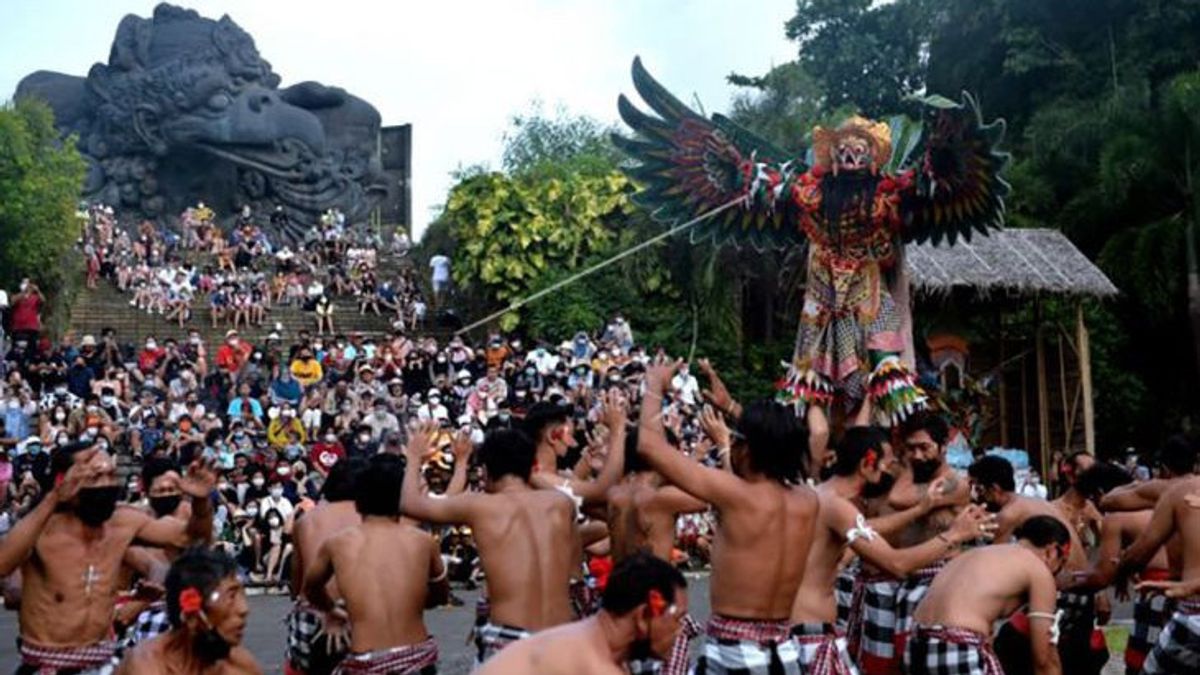YOGYAKARTA The Kecak Dance is one of the arts from the Island of the Gods of Bali, which is performed by male dancers with numbers ranging from 50 to 150 people.
The dancers will sit in a circle while sneering cak together to form a typical Balinese rhythm. The story of the Kecak Dance itself relates to the story of Ramayana, namely the resistance of Rama against Rahwana.
Saat ini Tari Kecak jadi salah satu warisan budaya sekaligus performa khas Bali yang banyak diminati, baik turis lokal maupun mancanegara.
The History of the Kecak Dance is explained by Ni Made Pira Erawati in her scientific work entitled Tourism and Creative Culture: A Study On The Kecak Dance in Bali published in the Kalangwan Journal provides an explanation of the history of the Kecak Dance.
Initially, the concept of the Kecak Dance which was dominated by male koor was taken from Sang Hyang Dance, a sacred and sacred dance that was only performed to repel disease outbreaks. Because it is sacred, this dance should not be performed carelessly for no specific reason. Even if this dance is performed without a sacred purpose, it is feared that sacredness and magical aura will disappear.
On the other hand, many people want to enjoy a sacred Balinese dance but hit by customary rules. Instead, Walter Spies, who is a German painter and his friend, Baryl de Zoete, collaborates with Wayan Limbak, a Balinese dance artist.
In the 1930s, a Kecak dance was created inspired by Sang Hyang's dance, which was inserted with the story of Ramayana's epic, which was a piece of Subali's battle with Sugriwa, or Rama's resistance to Rahwana who kidnapped Dewi Sita.
BACA JUGA:
Kecak Dance uniqueness is the reason why many tourists who come to Bali want to enjoy the show. The uniqueness that can be found is as follows.
Kecak dances really rely on cohesiveness and concentration because the number of dancers can be done as many as 50 people. In fact, this dance has been performed with 5,000 dancers.
The arrangement of the kecak dance usually consists of a leader who gives an initial tone, a high or low tone pressure dancer, then a dancer who is the introduction to the storyline.
The Kecak dance uses Balinese properties, namely coal, frencing flowers, ringer ringers, black-and-white scarves, masks, and offerings. Not only is it a complement, the property also implies a deep meaning, especially about the concept of good and bad.
Kecak dance can be held without music. The reason is that this dance really emphasizes the vocal abilities and concentration of the dancers. Although it looks easy, not everyone is able to become a Kecak dancer.
The Kecak dance itself is basically dominated by male koor, while there are fewer dancers who actually perform dances.
That's information related to the Kecak Dance. Visit VOI.id to get other interesting information.
The English, Chinese, Japanese, Arabic, and French versions are automatically generated by the AI. So there may still be inaccuracies in translating, please always see Indonesian as our main language. (system supported by DigitalSiber.id)


















